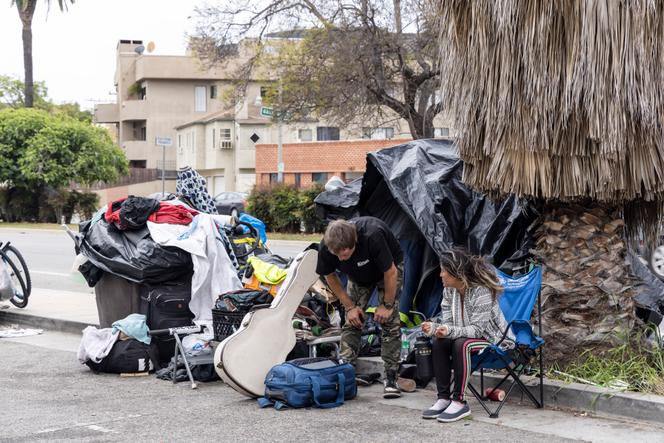


The extreme summer heat waves have brought into sharp focus both the rising numbers and the vulnerability of homeless people in the American West. There are now almost 50,000 in Los Angeles; 9,000 in San Francisco; 5,000 in Phoenix, Arizona; 4,000 in Portland, Oregon and almost 9,000 in Denver, Colorado, whose metropolitan area had the highest post-pandemic increase of 31% between 2022 and 2023. In all these major cities – which happen to be Democratic – government officials are under pressure to find solutions to an increasingly acute problem, despite the millions of dollars poured in from public funding, and the public is losing patience. But it is a complex issue involving an inextricable tangle of elements such as poverty, psychiatric disorders, drug addiction, and housing shortages.
The problem is particularly pressing in California where a third of all homeless people live. Los Angeles is "really the epicenter," said the megacity's mayor Karen Bass on June 6. "We have over 40,000 people sleeping in tents." Before her election at the end of 2022, the Democrat had promised to reduce the number of homeless people by 17,000 during her first term. On December 12, the day after she was sworn in, the mayor declared a state of emergency; an administrative measure that allows government officials to solicit federal funds. Less than a year later, she acknowledged that she has had mixed results.
Within six months, her policy of progressively eliminating tents and rehousing their occupants had enabled more than 14,300 people to be taken off the streets; 19 encampments were dismantled, and their occupants given temporary accommodation. But the annual count still shows a 10% increase in the number of homeless people, which means there are still 46,000 people sleeping on the streets every night. And only 100 or so people who benefited from temporary solutions have found permanent housing.
On July 10, when she extended the state of emergency, the mayor said she was "very disappointed," especially as not all social housing had reached full capacity. However, in the opinion of charitable organizations, she can take credit for having "changed the terms of the debate." In her budget presented in June, she obtained the $1.3 billion (€1.23 billion) envelope she was demanding, which was 10 % of the city's budget.
Elected in June, Denver's new mayor Mike Johnston, promised to tackle the social destitution that has taken hold of the streets since the pandemic. He also adopted the tactic of creating a sense of urgency, and like Los Angeles, his first move was to declare a state of emergency. He promised to provide housing for 1,000 people before the end of the year. In Phoenix, record temperatures of over 43°C that lasted for 31 successive days justified Mayor Kate Gallego's push to speed up the progressive evacuation of a homeless encampment known as "The Zone." The extreme temperatures in 2022 caused the death of 425 people, 42% of whom had been living on the streets.
You have 60.02% of this article left to read. The rest is for subscribers only.
